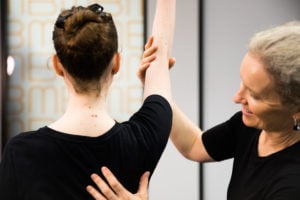 Rotator cuff injury is a common shoulder injury. In the clinic I often find patients have heard the term “Rotator Cuff” but aren’t quite sure what it is or what it means. Injuries to the shoulder are the third most prevalent after low back pain and neck pain. The structure most commonly injured in the shoulder is the Rotator Cuff. An injury to the Rotator Cuff can be somewhat debilitating and somewhat not, depending on the mechanism of injury and severity. Lets explore what it is and its function a little more!
Rotator cuff injury is a common shoulder injury. In the clinic I often find patients have heard the term “Rotator Cuff” but aren’t quite sure what it is or what it means. Injuries to the shoulder are the third most prevalent after low back pain and neck pain. The structure most commonly injured in the shoulder is the Rotator Cuff. An injury to the Rotator Cuff can be somewhat debilitating and somewhat not, depending on the mechanism of injury and severity. Lets explore what it is and its function a little more!
What is the Rotator Cuff?
It is a collection of four muscles that encapsulate the head of the humerus (shoulder bone or ball) and keep it stabilised within the glenoid (socket). The four muscles are called supraspinatus, infraspinatus, teres minor and subscapularis. They originate on different surfaces of the shoulder blade and run over the ball and socket joint of the shoulder to surround and attach on a small bony prominence just below the head of the humerus. Like all muscles they have tendons, only these tendons are slightly longer and flatten out as they round the ball into their anchor point. They even weave together to provide a mesh rather than a band. This plays a part in complications that come from the Rotator Cuff but we will explore this further in another blog! The Rotator Cuff function is a remarkable adaptation of force production and stabilisation at the shoulder joint.
What is its function?
The shoulder is an exceptionally mobile joint. In a nutshell, the job of the shoulder is to position the hand to allow us to complete everyday tasks. Because the shoulder is so mobile, it has sacrificed big strong ligaments which add stability to the joint, and instead opted for a system which would make any engineer proud. You guessed it, the system is the Rotator Cuff. These muscles act like an intricate balancing act. As you lift your arm the ball rotates in the socket and the Rotator Cuff muscles balance tension on opposing sides of the joint to maintain the joint stability. Too much tension on one side and you can impinge, too little tension and the shoulder becomes unstable. So much coordination and we don’t even have to consciously think about it!
They aren’t all about stabilising the shoulder joint however. They also can over tense on one side to allow the shoulder joint to rotate. Consider tucking your shirt in behind you, the subscapularis muscle of the Rotator Cuff tenses on its side of the ball and socket more than the opposing muscles to turn the arm inwards to position your hand behind you allowing you to tuck yourself in. The same can be said about the other muscles allowing the arm to turn outwards or lift the arm up.
For more information about mechanisms of injury, and what you would experience with a Rotator Cuff tear read on to Part Two here.
If you are having pain in your shoulder come in to see one of our Physio’s here at Bend + Mend in Sydney’s CBD. Early assessment and treatment means a quicker recovery!





